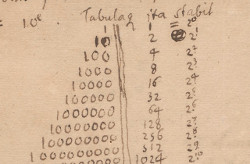Bitmasks, bitsets and flags
yourbasic.org/golang

Bitmask
A bitmask is a small set of booleans, often called flags, represented by the bits in a single number.
type Bits uint8
const (
F0 Bits = 1 << iota
F1
F2
)
func Set(b, flag Bits) Bits { return b | flag }
func Clear(b, flag Bits) Bits { return b &^ flag }
func Toggle(b, flag Bits) Bits { return b ^ flag }
func Has(b, flag Bits) bool { return b&flag != 0 }
func main() {
var b Bits
b = Set(b, F0)
b = Toggle(b, F2)
for i, flag := range []Bits{F0, F1, F2} {
fmt.Println(i, Has(b, flag))
}
}0 true
1 false
2 true
Larger bitsets
To represent larger sets of bits, you may want to use a custom data structure.
The package github.com/yourbasic/bit
provides a bit array implementation and some utility bit functions.
Because a bit array uses bit-level parallelism, limits memory access, and efficiently uses the data cache, it often outperforms other data structures.
Here is an example that shows how to create the set of all primes less than n
in O(n log log n) time using the bit.Set data structure from package bit.
Try the code with n equal to a few hundred millions and be pleasantly surprised.
// Sieve of Eratosthenes
const n = 50
sieve := bit.New().AddRange(2, n)
sqrtN := int(math.Sqrt(n))
for p := 2; p <= sqrtN; p = sieve.Next(p) {
for k := p * p; k < n; k += p {
sieve.Delete(k)
}
}
fmt.Println(sieve)
{2 3 5 7 11 13 17 19 23 29 31 37 41 43 47}
Further reading
More code examples
 Go blueprints: code for common tasks is a collection of handy code examples.
Go blueprints: code for common tasks is a collection of handy code examples.
